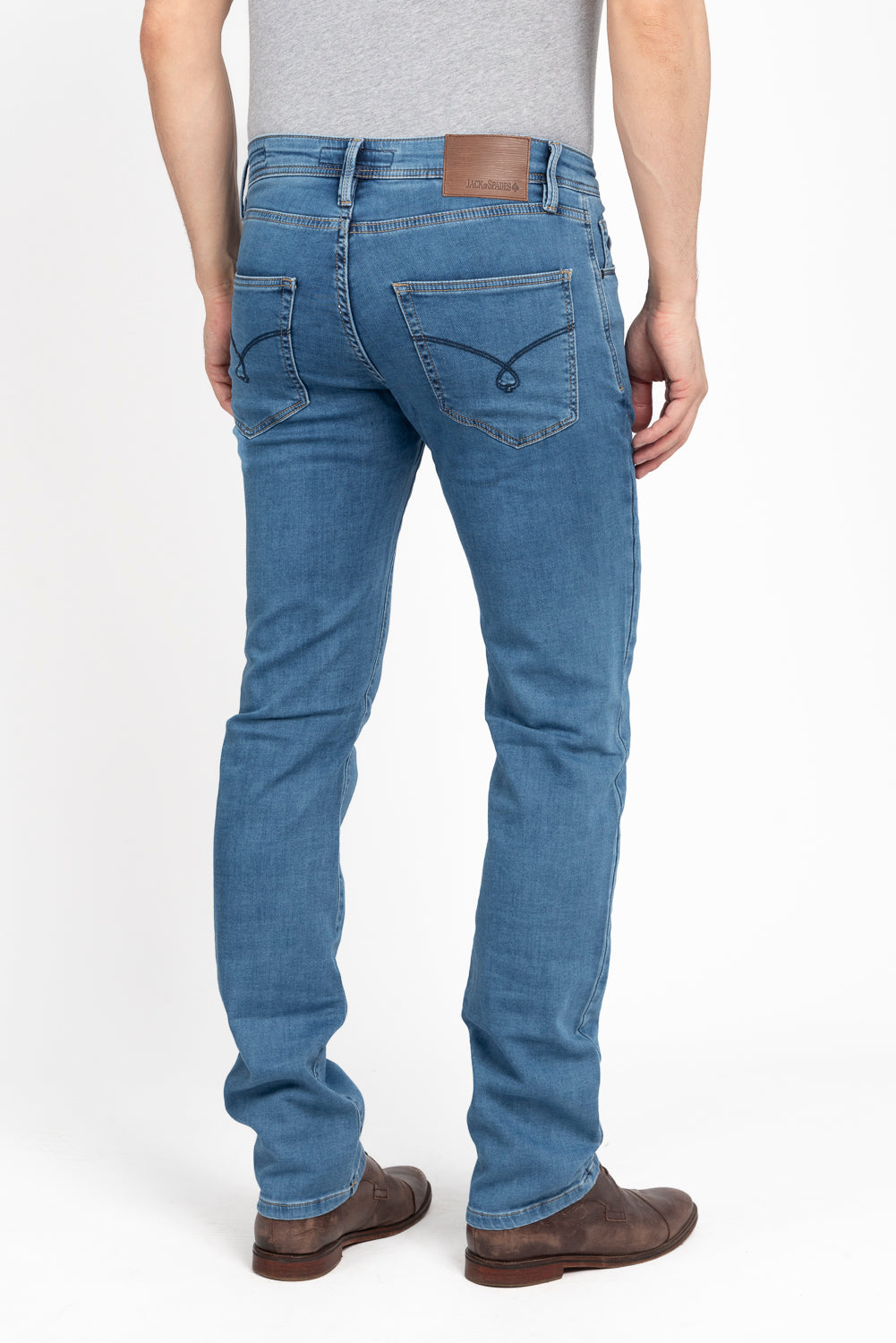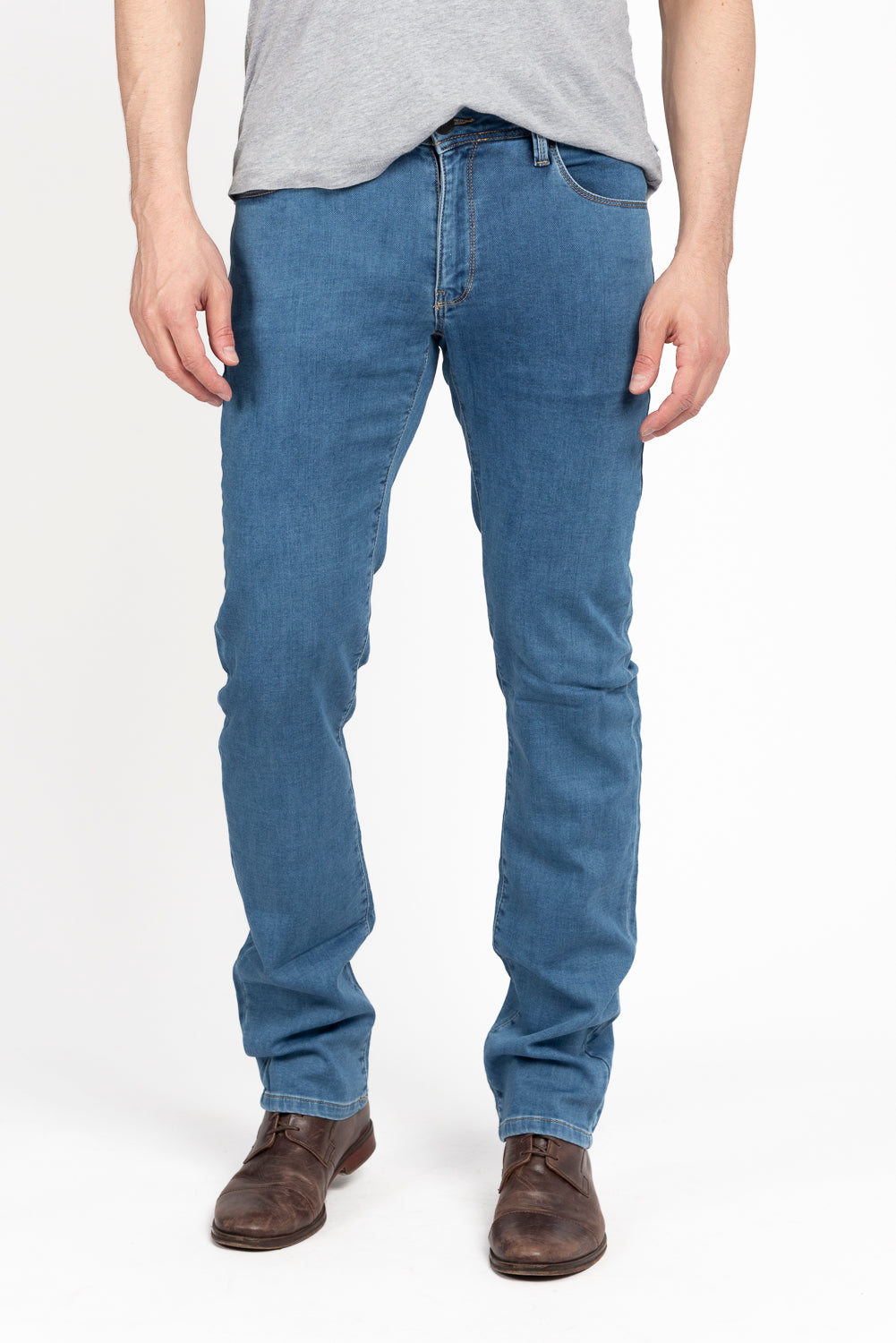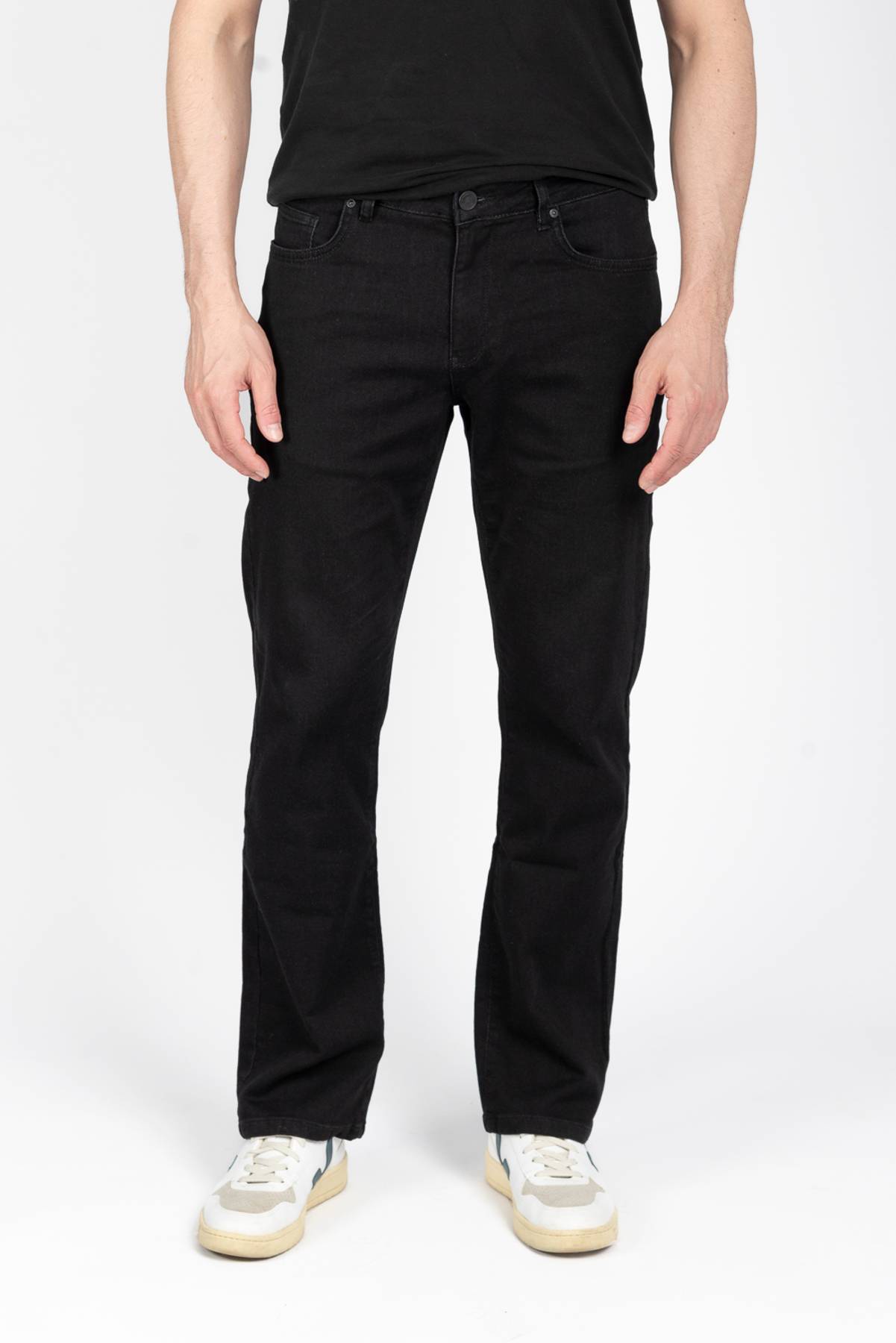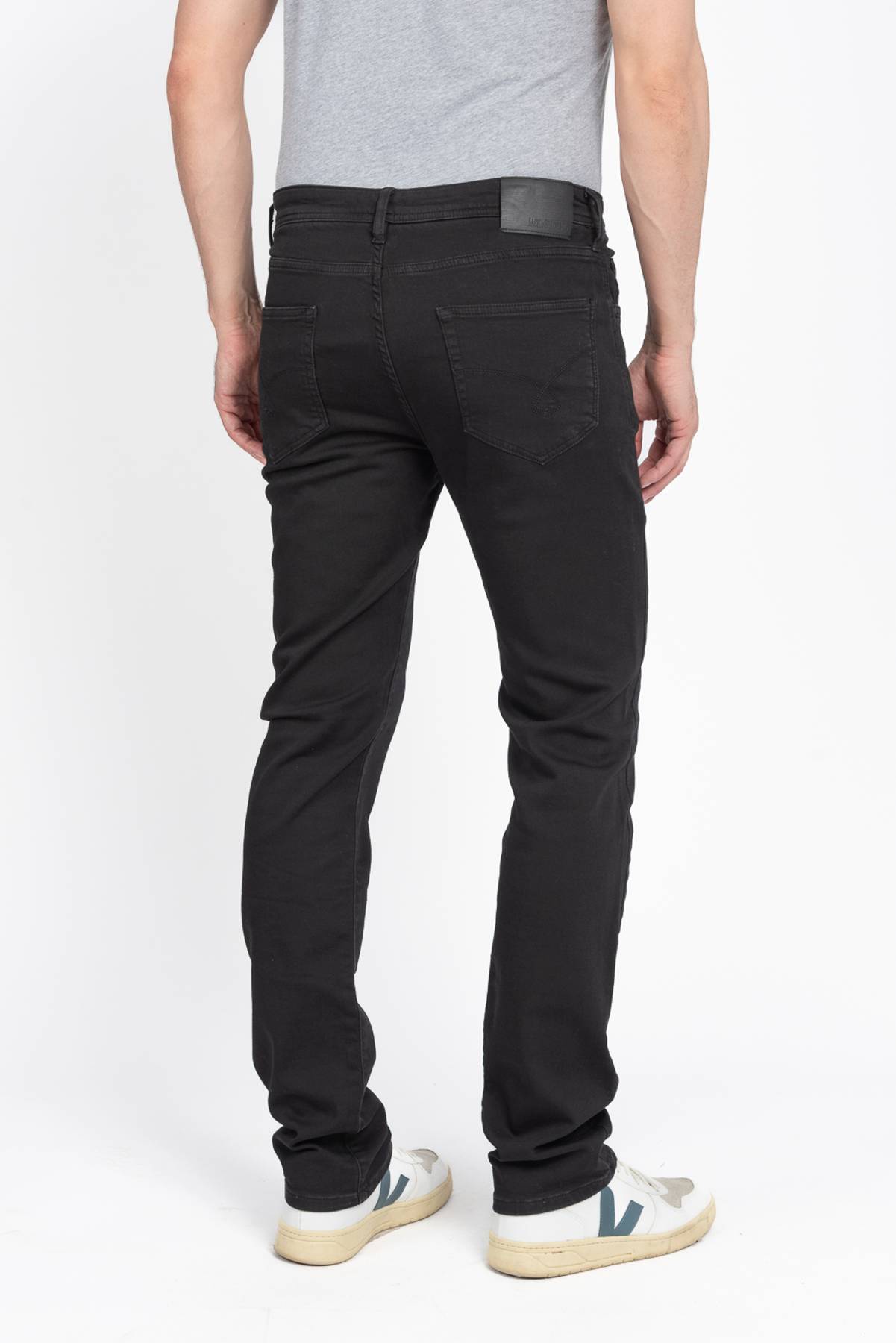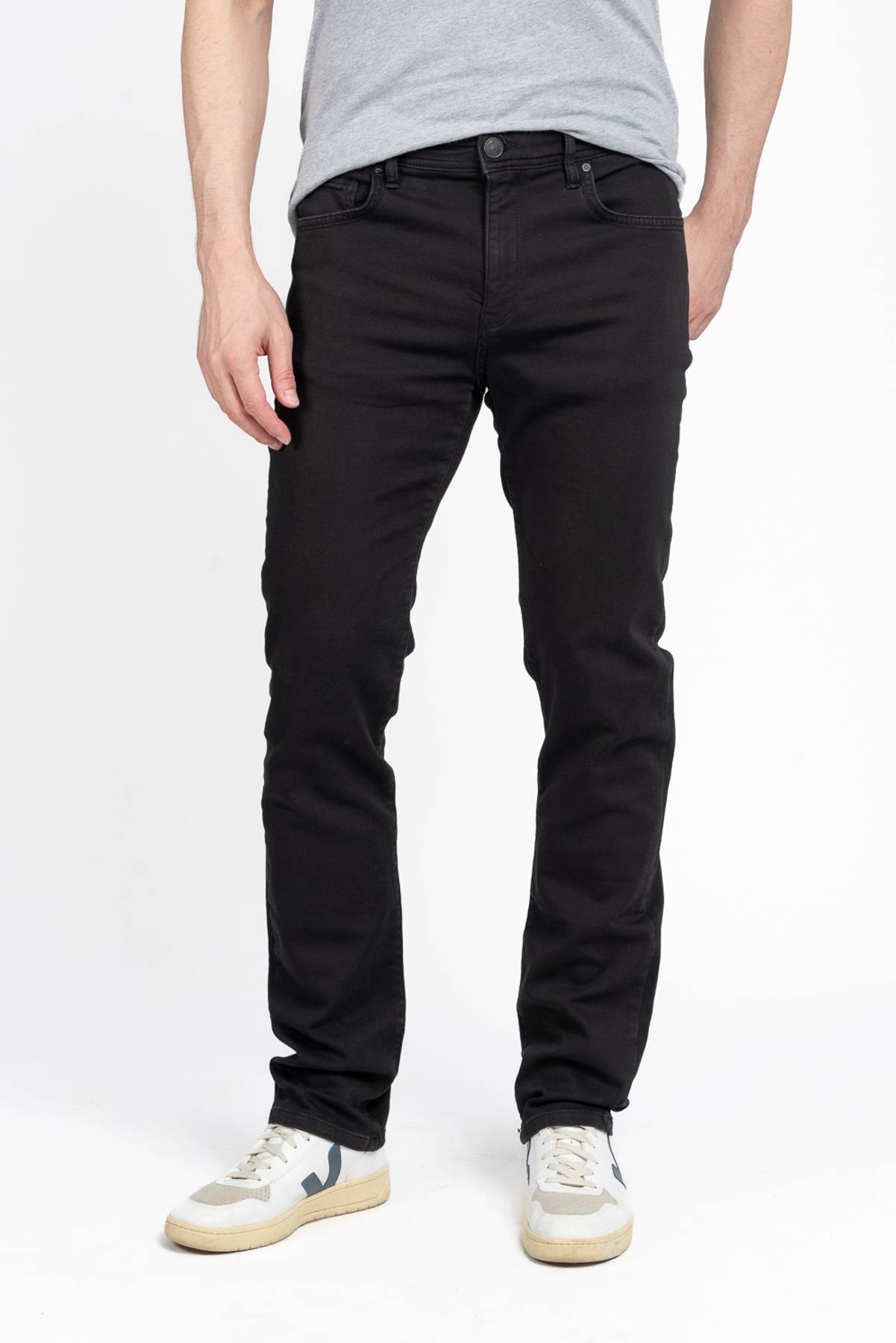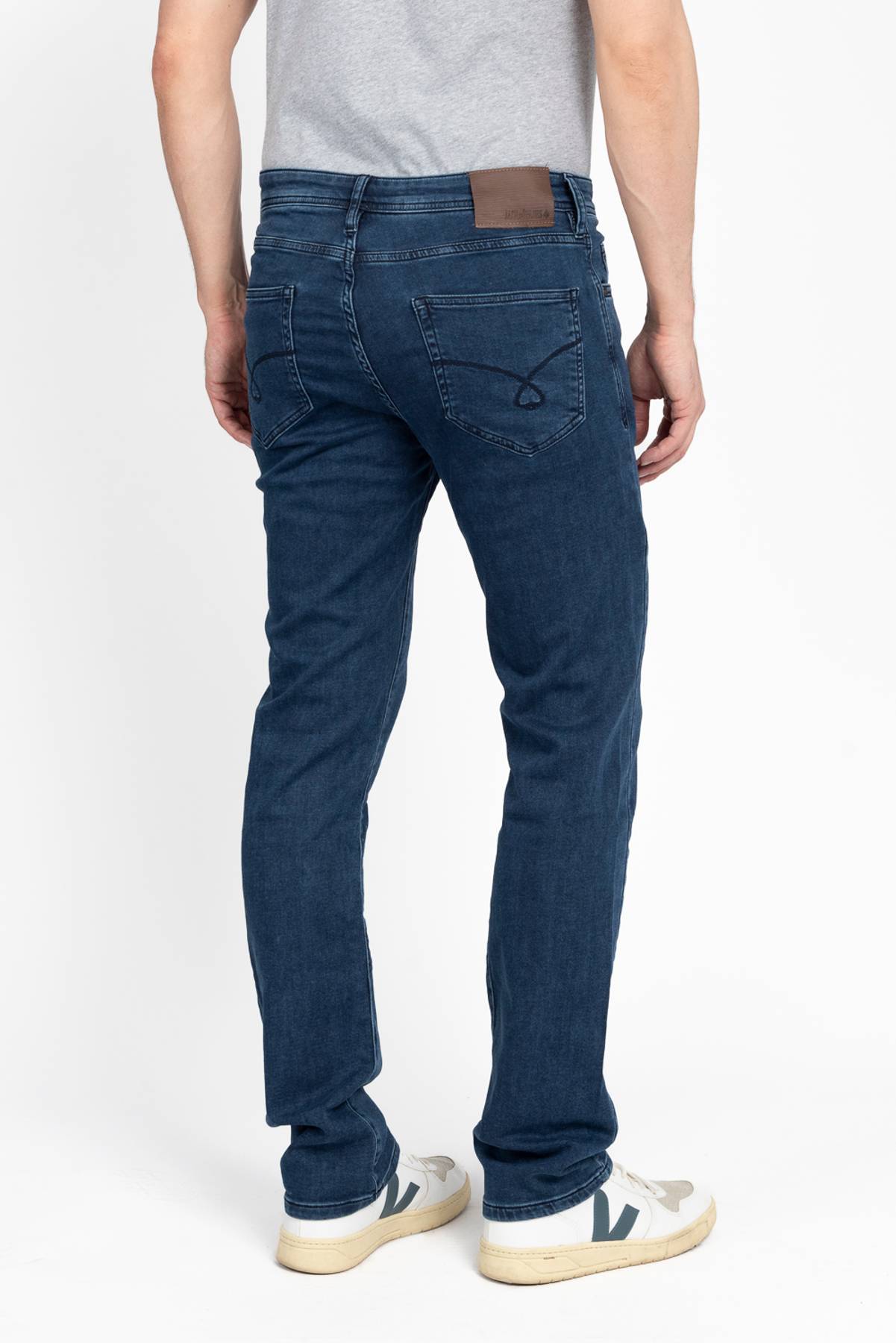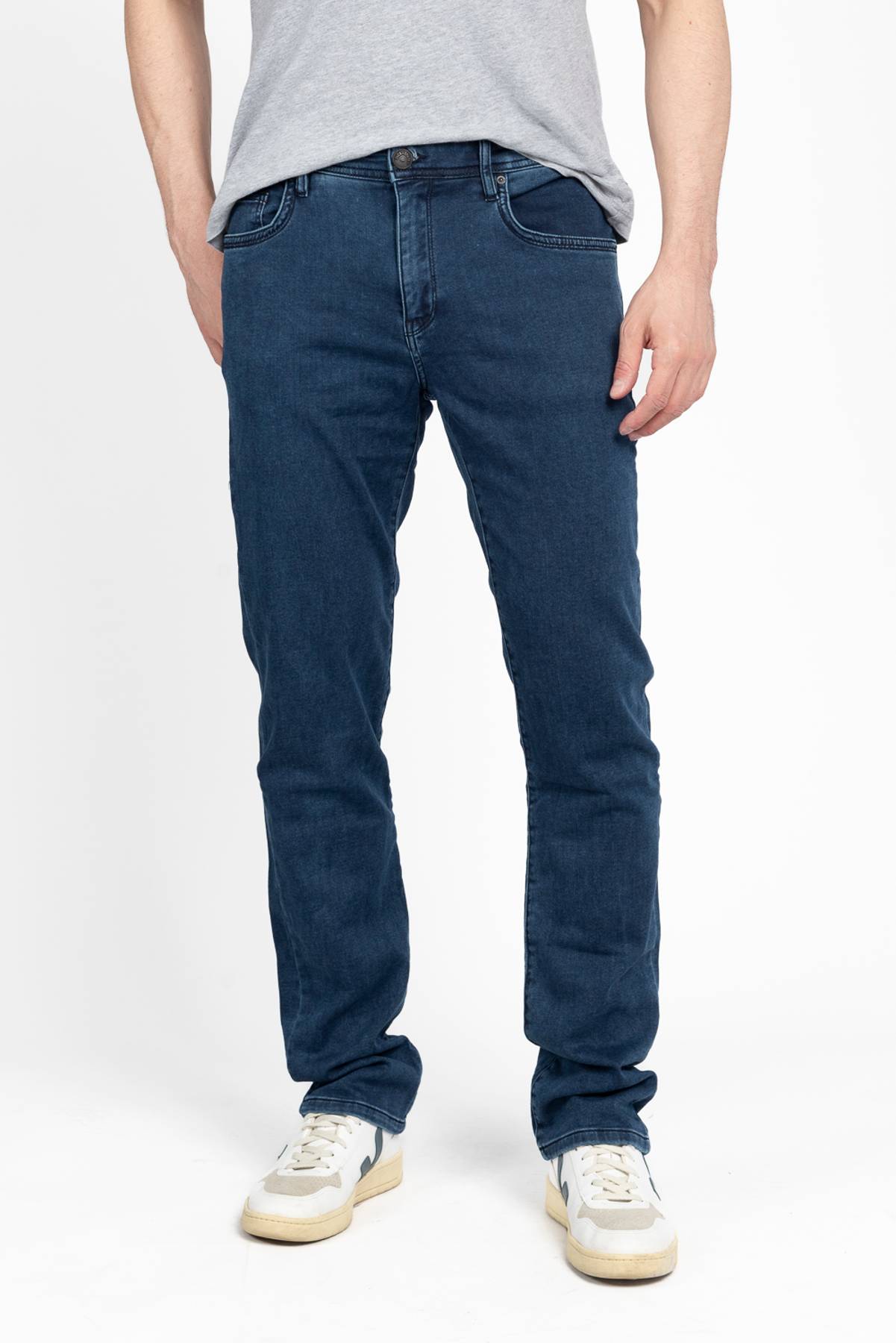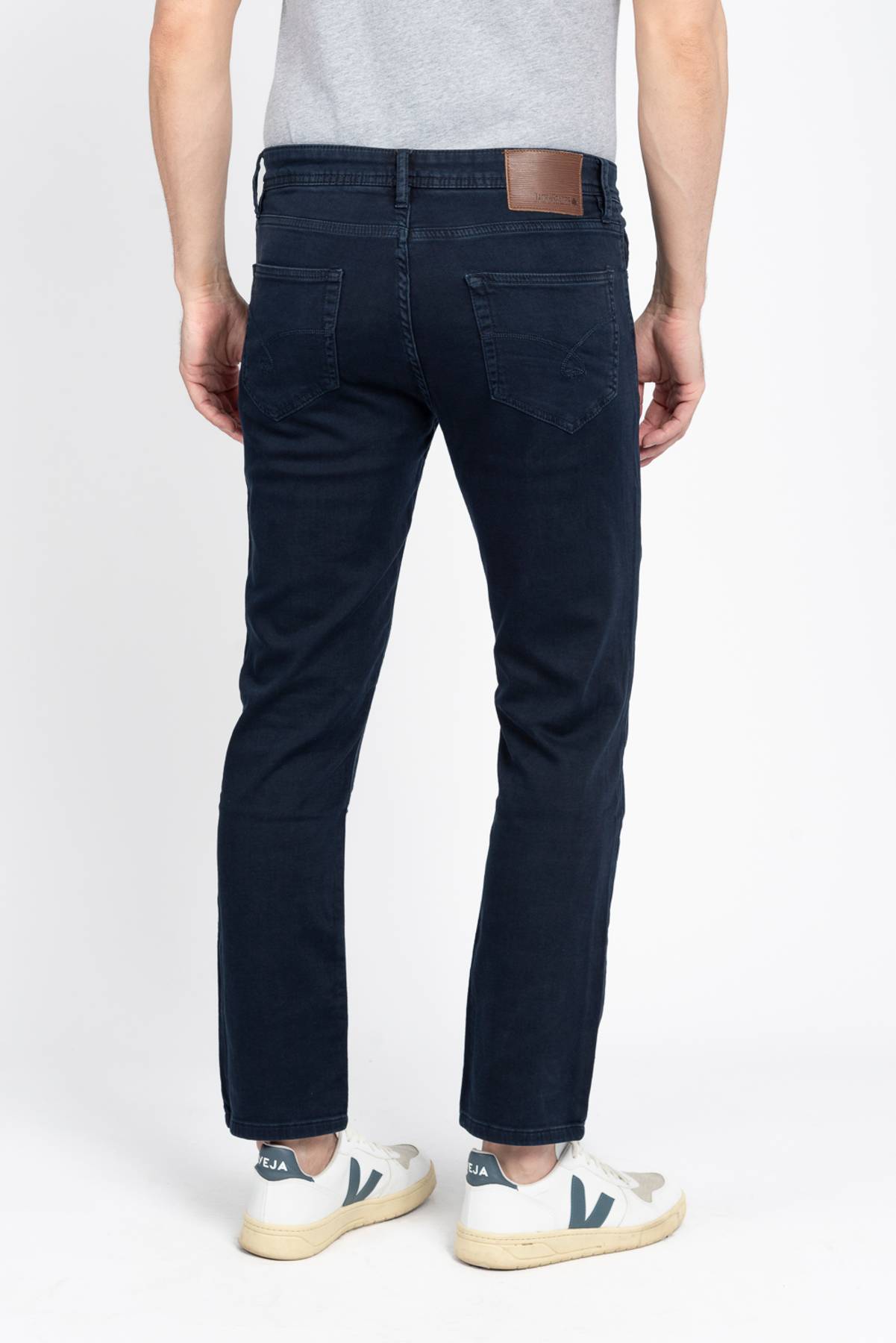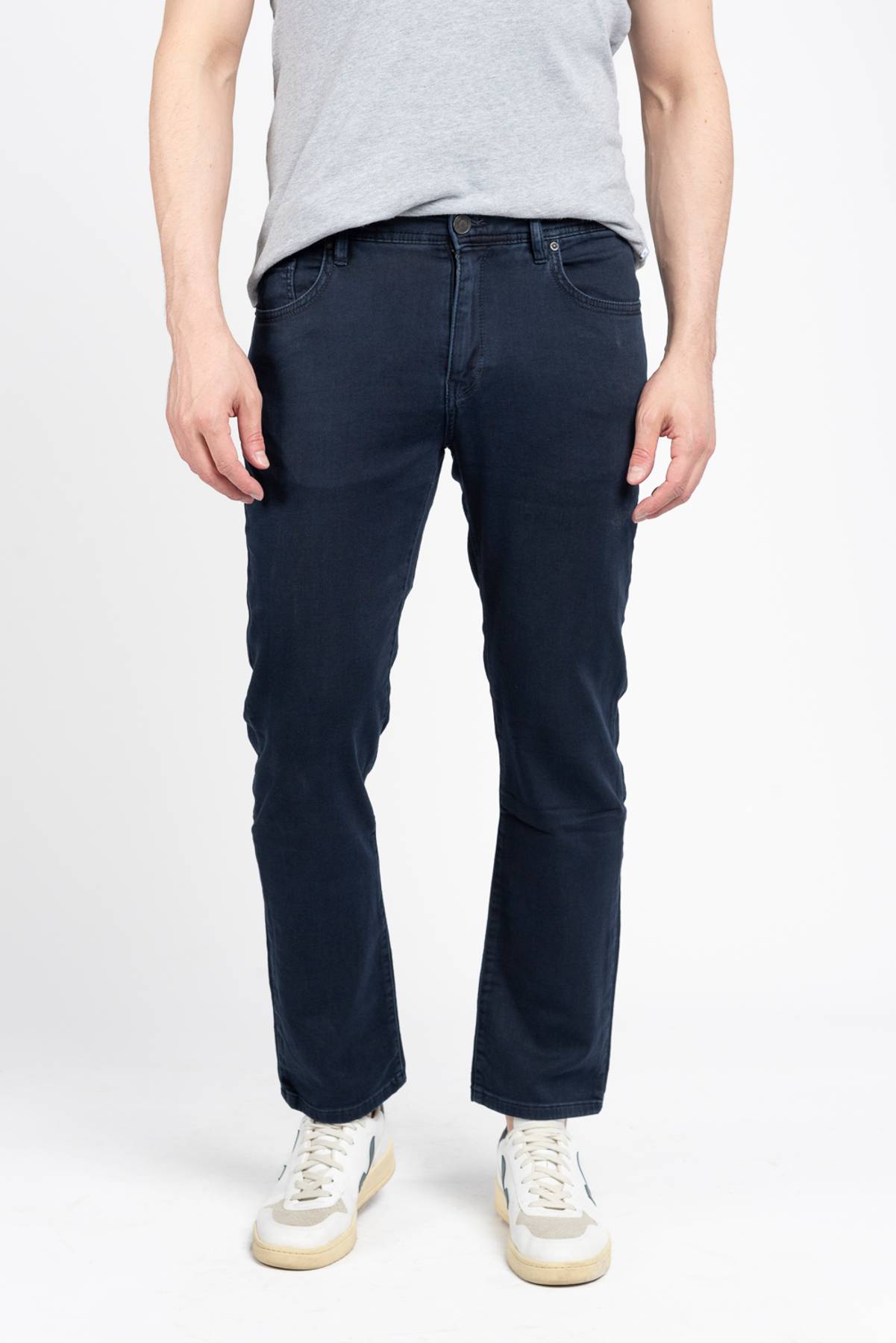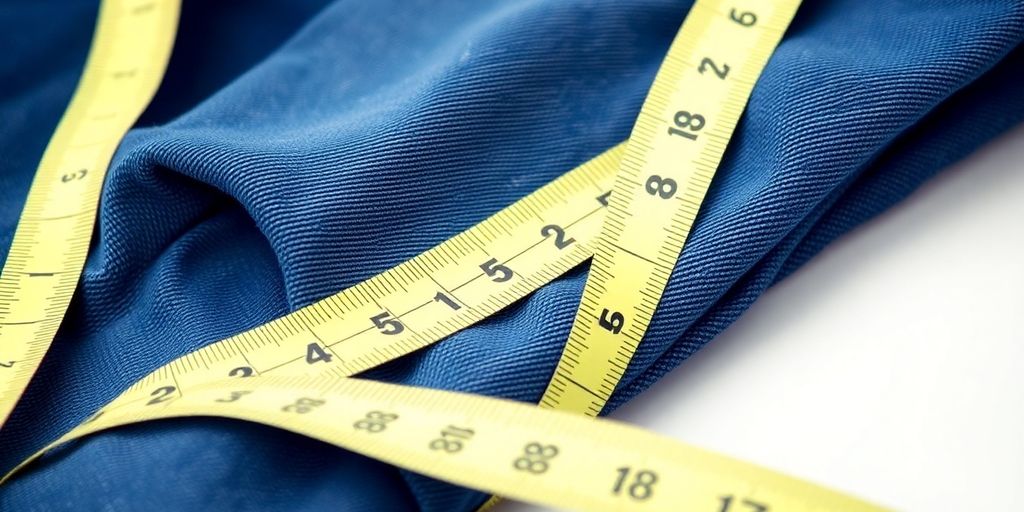Finding the perfect pair of jeans can be a real challenge, especially with all the different styles out there. One of the most important things to consider is the rise of the jeans. Knowing how to measure jeans rise properly can make a huge difference in how they fit on your body. This guide will walk you through everything you need to know about measuring jeans rise for that ideal fit.
Key Takeaways
- To measure jeans rise, lay the jeans flat and measure from the crotch seam to the waistband.
- Avoid measuring stretched jeans to ensure accuracy; always use jeans that haven't been worn excessively.
- Low-rise jeans sit below the waist, while mid-rise and high-rise options offer different fits and styles.
- Pair low-rise jeans with cropped tops for a balanced look; mid-rise jeans work with almost any top.
- Understanding your body type helps in choosing the right rise for comfort and style.
Measuring and Understanding Jean Rise
How to Measure Front and Back Rise
Measuring the rise of your jeans is super important to make sure they fit right. It's not hard, I promise! Basically, the rise is the distance from the crotch seam to the top of the waistband.
Here's how you do it:
- Lay your jeans flat on the floor, buttoned and zipped. Smooth out any wrinkles.
- For the front rise, measure from the crotch seam straight up to the top of the front waistband. Write that number down.
- Flip the jeans over and do the same thing on the back. The back rise is usually longer than the front. Again, write it down.
It's a good idea to measure jeans that haven't been stretched out from wearing. This will give you the most accurate measurement.
Common Mistakes When Measuring Rise
It sounds easy, but people mess this up all the time. Here are some common mistakes to avoid when you measure jeans:
- Measuring stretched-out jeans. Jeans stretch when you wear them, so the measurement won't be accurate. Measure them after they've been washed and dried.
- Not measuring in a straight line. Make sure your tape measure is straight. If it curves, your measurement will be off.
- Getting the front and back rise mixed up. The back rise is always longer than the front rise.
Why Accurate Measurements Matter
Getting the right measurement is important. If you don't, your jeans might not fit right. A well-measured rise can make all the difference. If you want to buy high-rise jeans online, you need to know your measurements.
- Comfort: Jeans that fit well are more comfortable.
- Style: The rise affects how your jeans look.
- Confidence: When your jeans fit well and look good, you feel better about yourself.
The rise of your jeans affects both comfort and style. A higher rise can make your legs look longer and highlight your waist, while a lower rise gives a more relaxed vibe. Finding a rise that fits your body and lifestyle is key.
Steps to Measure Jeans
Preparing Your Workspace
Before you even think about grabbing that measuring tape, let's get organized. Find a flat, hard surface – your kitchen table or even the floor works great. Smooth out any wrinkles in the jeans; this is super important for getting accurate numbers. A smooth surface ensures the fabric isn't stretched or bunched up, which can throw off your measurements. Think of it like prepping a canvas before painting – you want a clean, even base to start with.
Measuring the Waist
Alright, let's tackle the waist. Button up those jeans and lay them flat. Now, grab your measuring tape. Measure straight across the waistband from one side to the other. Don't pull or stretch the fabric. Double that number, and boom, you've got your waist measurement. It's important to measure waist size in jeans while they're laid flat to avoid any distortion.
Measuring the Length
Okay, time to figure out the length. Lay those jeans flat again, making sure they're nice and smooth. Start your measuring tape at the top of the waistband and run it down the outside of the leg to the very bottom of the hem. That's your inseam length. This measurement is key for finding best jeans that fit you perfectly. Make sure you're measuring along the seam for the most accurate result.
Measuring jeans accurately is all about consistency and attention to detail. Take your time, double-check your numbers, and you'll be well on your way to finding the perfect fit. It might seem tedious, but it's worth it to avoid the hassle of returns or ill-fitting clothes.
Choosing the Right Rise for Your Body Type
Choosing the right rise can feel like navigating a minefield, but it doesn't have to be! It's all about understanding your body shape and what makes you feel good. What works for one person might not work for another, and that's totally okay. Let's break down the different rises and who they typically flatter.
Understanding Low-Rise Jeans
Low-rise jeans sit below your natural waistline, usually around your hips. They were super popular back in the day, and some people still love them. Low-rise jeans can make your torso look longer, but they might not be the best if you want a lot of coverage around your midsection. They pair well with crop tops or fitted tees. If you're going for low-rise, just be mindful of how much skin you're showing and whether you're comfortable with that.
Exploring Mid-Rise Options
Mid-rise jeans are the chameleons of the denim world. They sit at or just below your natural waist, making them a safe bet for most body types. They're not too high, not too low—just right. You can wear them with pretty much anything, from tucked-in blouses to relaxed sweaters. If you're unsure where to start, mid-rise is a great option. They offer a balanced look and are super versatile. These wide jeans are a great match for mid-rise jeans too, adding balance to their flowy silhouette.
Benefits of High-Rise Jeans
High-rise jeans sit at or above your natural waist, often reaching your belly button. They're fantastic for creating the illusion of longer legs and a defined waist. High-rise jeans are also great for providing support and coverage. They can be styled in many ways, from tucking in your top to pairing them with a cropped sweater. They're a popular choice for those who want a secure and comfortable fit. High-rise jeans are praised for their ability to accentuate the waist and flatter curvy figures, creating the illusion of longer legs. They offer a supportive fit, making them a popular choice in fashion.
Finding the right rise is all about finding what makes you feel confident and comfortable. Whether you go for high-rise, mid-rise, or low-rise jeans, the key is to consider your unique shape and how the jeans fit your lifestyle.
Styling Your Jeans Based on Rise
Tops That Pair Well with Low-Rise Jeans
Low-rise jeans are interesting. They sit lower on your hips, so the tops you choose can really change the whole vibe. Crop tops and fitted tees are classics for a reason. They show off a bit of midriff and keep the look balanced. But don't feel limited! You can also try a slightly oversized sweater or a button-down shirt tied at the waist. The key is to avoid anything too long or bulky, which can throw off your proportions. Think about showing off a balanced look.
Mid-Rise Jeans for a Balanced Look
Mid-rise jeans? They're the chameleons of the denim world. Seriously, you can wear almost anything with them. T-shirts, blouses, sweaters – you name it. Want a more put-together style? Tuck in your shirt. Feeling casual? Leave it untucked. They're super versatile. I find that a casual tee works great for everyday wear. They sit right at your natural waist, making them comfy and easy to style.
Accessorizing High-Rise Jeans
High-rise jeans are all about accentuating your waist and creating a longer leg line. Tucking in your tops is a must to show off that waist. Think fitted shirts, blouses, or even bodysuits. A belt can also add definition and polish. And don't forget about jackets! Cropped jackets and blazers work really well with high-rise jeans, creating a balanced silhouette. High-rise jeans are great for elongating your legs.
Finding the right balance between comfort and style is key. Don't be afraid to experiment with different tops, shoes, and accessories to find what works best for you. The goal is to create outfits that make you feel confident and comfortable in your own skin.
Common Mistakes to Avoid When Measuring

Measuring Stretched Fabric
Okay, so you're all set to measure your favorite pair of jeans. But hold on a sec! Are they fresh out of the wash, or have you been wearing them all day? Measuring jeans that have been stretched out from wear is a big no-no. Trust me, I've been there. You think you're getting an accurate measurement, but in reality, the fabric has already given way, leading to a size that's totally off. Always measure jeans that are in their 'true' state – either brand new or freshly laundered. This ensures you're working with the fabric's original dimensions.
Not Measuring Straight
Another common pitfall is not keeping the tape measure straight. It's super easy for the tape to curve or bend, especially when you're dealing with the contours of jeans. This can add extra length or width to your measurements, throwing everything off. Make sure the tape measure lies flat and follows a straight line from point A to point B. It might help to have someone assist you, especially when measuring longer distances like the inseam. I usually ask my partner to help me with this, and it makes a world of difference.
Confusing Front and Back Rise
This one's a classic! The front rise and back rise are different measurements for a reason – they accommodate the natural curves of your body. The back rise is almost always longer than the front rise. If you mix them up, you'll end up with jeans that either feel too tight in the front or too loose in the back. Always double-check which part you're measuring. I usually mark the front and back with safety pins before I start, just to avoid any confusion. It's a simple trick, but it saves a lot of headaches. Knowing the difference is important when choosing the right pants rise.
It's easy to get caught up in the process and make these little mistakes, but taking a few extra seconds to avoid them can save you from ending up with jeans that don't fit right. Trust me, your future self will thank you!
Tips for Accurate Measurements

Using the Right Tools
Okay, so you're ready to measure your jeans. First things first: ditch the metal ruler. Seriously. You need a flexible measuring tape – the kind a tailor would use. It needs to be at least 36 inches long. Don't try to make do with something shorter; you'll just end up frustrated. Also, make sure your measuring tape isn't stretched out or damaged. A worn-out tape can give you inaccurate readings, which defeats the whole purpose.
Measuring Twice for Accuracy
Always measure twice, cut once, right? The same goes for jeans. It's super easy to misread a measurement the first time around. Maybe the tape slipped, or you weren't holding it quite straight. Whatever the reason, measuring twice helps catch those little errors. If you get different measurements each time, measure a third time! Use the most common measurement. It sounds tedious, but it's worth it to avoid ending up with jeans that don't fit.
Understanding Size Charts
Size charts are the bane of everyone's existence, aren't they? Every brand seems to have its own idea of what a size 32 actually means. So, don't just assume you know your size. Always, always check the brand's size chart before ordering jeans online. And pay attention to the details. Some charts give measurements in inches, others in centimeters. Some list waist sizes, others list hip sizes. Make sure you're comparing apples to apples. If you're between sizes, it's usually better to go up a size. You can always get them tailored, but you can't add fabric that isn't there. Also, be aware that some brands use vanity sizing, which means they label their clothes as smaller than they actually are. It's annoying, but it's a thing.
It's important to remember that size charts are just a guide. They're not a guarantee of a perfect fit. But they can help you narrow down your options and avoid ordering the wrong size altogether.
Here's a basic example of how size charts might look:
| Size | Waist (inches) | Inseam (inches) |
|---|---|---|
| 28 | 28 | 30 |
| 30 | 30 | 32 |
| 32 | 32 | 34 |
Here are some things to keep in mind:
- Measurements should be taken with the measuring tape snug, but not too tight.
- If you're measuring your waist, measure at your natural waistline (usually around your belly button).
- If you're measuring your inseam, measure from the crotch to the bottom of the leg.
- If you're still not sure what size to order, contact the brand's customer service department. They may be able to help you choose the right size based on your measurements. If you are measuring woman's waist, make sure to follow the instructions carefully.
The Impact of Rise on Comfort and Style
How Rise Affects Fit
The rise of your jeans? It's not just some random measurement. It seriously changes how comfy you are and how you look. A higher rise can make your legs look super long and highlight your waist. On the flip side, a lower rise gives off a more chill, casual vibe. Knowing your measurements helps you pick jeans that work with your body and your personal style.
Choosing the Right Rise for Activities
Think about what you do all day. Low-rise jeans sit below your natural waist. They can feel less tight, but you might be pulling them up all the time if you're moving around a lot. High-rise jeans give you more coverage and support. They're great if you're bending or sitting a lot. Mid-rise jeans are kind of in the middle. They give you some support without feeling too tight. It's all about finding what works for your day. For example, if you're into wide jeans, you might want a mid-rise for better movement.
The Role of Fabric in Comfort
The fabric of your jeans also plays a big part in how comfy they are. Stretchy fabrics like those with elastane can make any rise feel better, especially if you're active. Rigid denim might feel more structured, but it can also feel less forgiving, especially in lower rises. Consider the fabric when you're trying on jeans. Move around, sit down, and see how it feels. You want something that moves with you, not against you. Also, remember to check out key features of jeans to understand how different fabrics affect the overall fit and feel.
Finding the right rise is all about what makes you feel good. Whether you like high-rise, mid-rise, or low-rise jeans, think about your body and how the jeans fit into your life.
Final Thoughts on Measuring Jeans Rise
So there you have it! Measuring the rise of your jeans isn’t as tricky as it seems. Just remember to lay them flat, take your time, and measure carefully. Whether you prefer low-rise, mid-rise, or high-rise, knowing your measurements can really help you find that perfect fit. It’s all about comfort and style, right? Don’t forget to try on different styles and see what feels best for you. Happy jean shopping!
Frequently Asked Questions
What tools do I need to measure jeans accurately?
To measure jeans properly, you'll need a flexible tape measure and a flat surface. Make sure the jeans are laid flat without wrinkles for the best results.
How do I measure the length of jeans?
To find the length, measure from the top of the waistband down to the ankle hem. Keep the jeans buttoned and flat for an accurate reading.
What is the best way to measure the rise of jeans?
To measure the rise, lay the jeans flat and measure from the crotch seam to the top of the waistband. This helps you know if they are low, mid, or high rise.
Why is it important to measure jeans while they are flat?
Laying jeans flat ensures the fabric isn't stretched, giving you the most accurate measurements. This is especially important when comparing sizes.
How can I avoid mistakes while measuring jeans?
To avoid errors, always measure un-stretched fabric, keep the measuring tape straight, and clearly differentiate between front and back rise.
What is the difference between low-rise, mid-rise, and high-rise jeans?
Low-rise jeans sit below your waist, mid-rise jeans are at or just below your natural waist, and high-rise jeans sit above your waist, offering different styles and fits.

